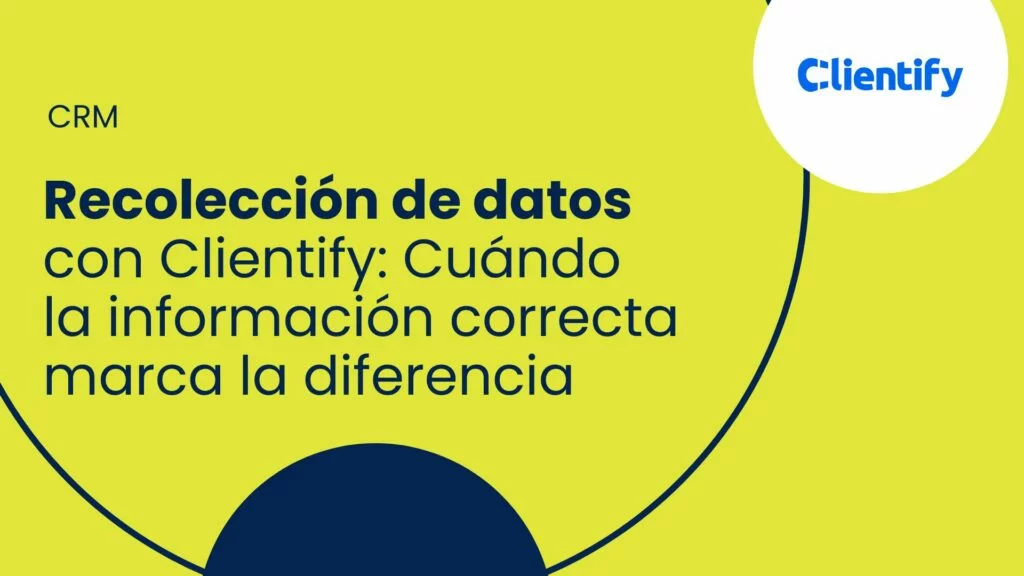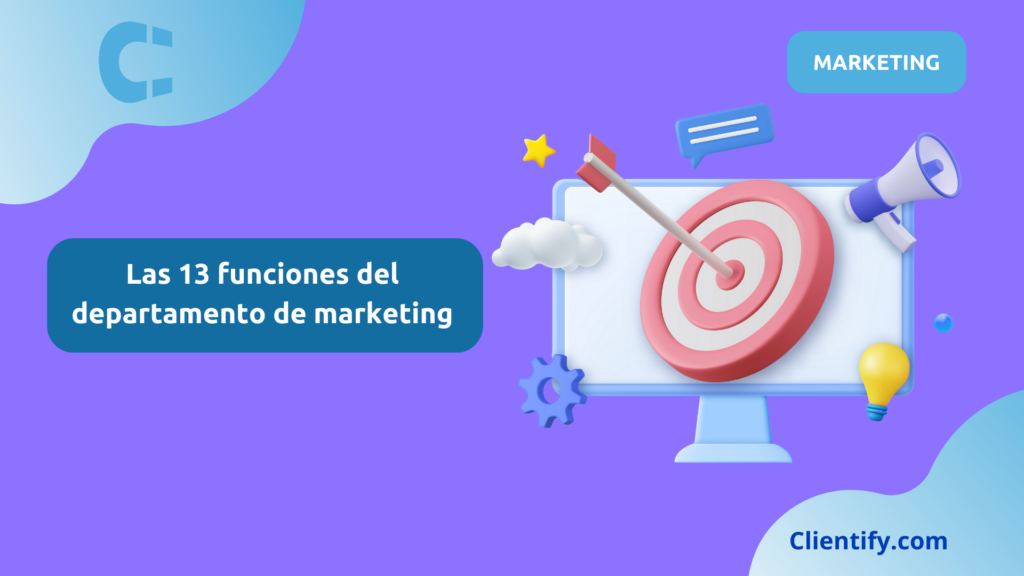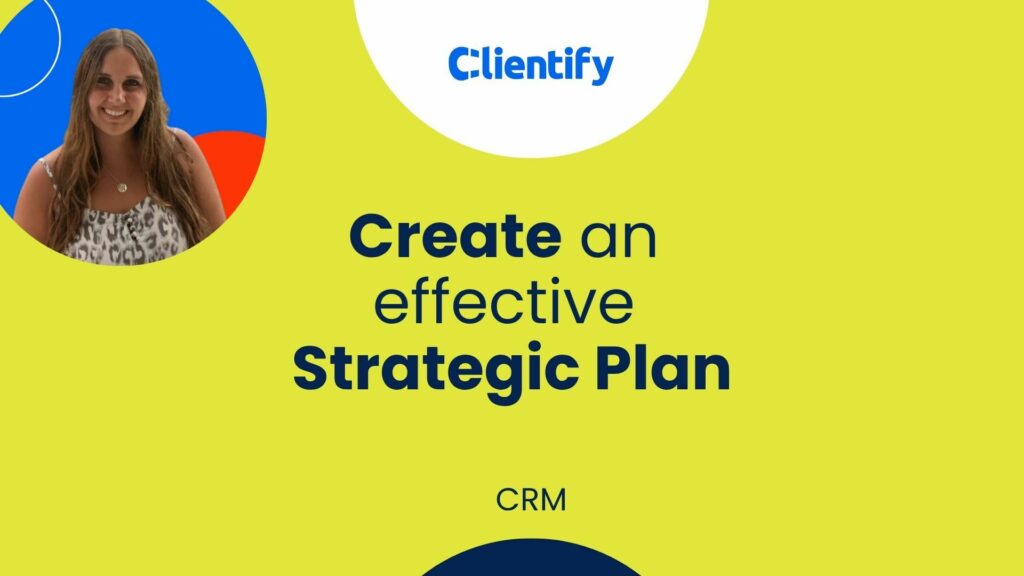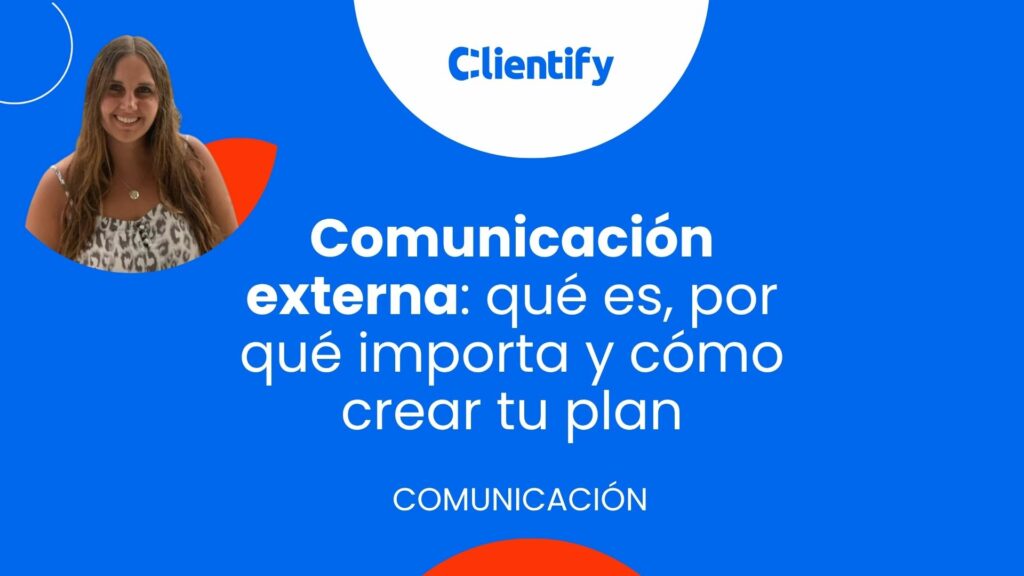Making decisions based on intuition may work for a while, but if you want to grow seriously and with a solid base, then you need data… but be careful, because not just any data: but relevant, accurate information obtained with the right methods and tools.
Today, companies already know how to collect them, but the important thing is not simply to get them, but to capture them well, analyze them correctly and use them strategically.
In this article I tell you what data collection is, what types exist, which are the most effective methods and how to apply them according to your industry. In addition, I show you the benefits, the most common challenges you may encounter and the key role that ethics play in the whole process.
Key ideas on data collection:
- Understand what it means to collect data and why it is crucial for your business.
- Discover qualitative and quantitative methods
- Learn about the tools available to you on Clientify
- Identify the real benefits and the mistakes to avoid when collecting data
- Tailor data collection methods to your sector
What is data collection?
Data collection is the process by which you obtain valuable information about your contacts, customers, leads, suppliers, among others; and these are used to answer questions, solve problems or make decisions.
Without them, conducting market research and segmenting your audience becomes impossible, measuring customer satisfaction is very difficult.
And in today’s context, good data management makes all the difference: it allows you to personalize the user experience and anticipate their needs.
Types of data collection
Before going into the details of the process, let’s start at the beginning: what are the types of data you can collect?
On the one hand there are the primary data, which are those obtained directly from sources such as:
Surveys
The classic that never fails. With a well thought-out survey, you know in depth what your customers think, what they need or what they would never buy again (yes, that adds up too).
You just need to ask the right questions. A tip? Don’t just ask about what you already know, you need to discover new things.
Interviews
Interviews allow you to delve deeper into what surveys don’t capture. They are perfect for understanding the “why” behind a decision. You can do them by video call, phone or in person if you’re into retro. A Focus Group is also a good option.
The key is to create a comfortable space where the interviewee feels free to tell his or her truths. You will detect patterns, unexpected insights and opportunities for improvement that you never imagined. A good interview can give you more than 100 forms.
Remarks
Have you ever stood there watching a user interact with your website and thought “but why is he clicking there?“?
Observing your customers’ actual behavior (without intervening) is one of the most powerful ways to understand what works and what does not.
From recording sessions on your site to watching someone use your app live, observation shows you the unfiltered truth. Sometimes, what people say is not what they do (pollsters know this well in elections) and this technique helps you spot those little details that make the difference between a delighted customer and one who abandons the cart.
Forms
Fast, concrete and very useful. Forms are that little friend that always gives you the right information without beating around the bush. When you design them well, they are a gold mine of primary data: from interests and needs to decision level or moment of the funnel they are in.
But don’t ask for data just for the sake of asking. The easier you make it, the more people will complete it. You should strive to ask for as little data as possible and eliminate friction. And if you use tools like Clientify, you can automate actions based on the responses.
Secondary data, on the other hand, are those that have already been collected by others, such as those found in:
- Bibliographies
- Public reports
- Government bases, etc.
Both types are useful, but serve different functions. The primary ones allow you to investigate particular situations of your company or client, while the secondary ones provide context, allowing you to compare, contextualize and identify trends.
Data collection methods and techniques
When collecting data, the first thing you need to be clear about is how you are going to do it…. and this is where methods and techniques come into play.
But do you really know the difference between method and technique? The method is the general strategy that guides the collection process, while thetechniques are the concrete actions and tools that are used to obtain all that information.
For a better understanding, here is a quick comparison between quantitative and qualitative methods, along with the most commonly used techniques in each:
| Method | Main feature | Common techniques |
| Quantitative | Numerical and measurable data | Surveys with closed-ended questions, forms, A/B testing, etc. |
| Qualitative | Understanding meanings and contexts | In-depth interviews, conversation analysis, focus groups, etc. |
Quantitative methods focus on collecting data that is numerical and measurable; and are ideal when you want to obtain accurate information. An online form with closed-ended questions is one of the most commonly used techniques, as it allows you to segment by response type.
Qualitative methods, on the other hand, help you understand the “why” behind an action or decision. Here you are not looking for numbers, but meanings; and for that you need to implement techniques such as in-depth interviews or behavioral analysis.
As a professional tip, the ideal for any type of business is to combine both methods to get the full picture: the numbers tell you what’s going on and the words tell you why.
Data collection instruments
Now I ask you, do you know what instruments are? Instruments are the tools used to collect data and thus, convert a contact into useful information.
Here are some of the most commonly used instruments:
- Online forms: ideal for collecting information such as interests, preferences, personal data, etc.
- Digital surveys: When designing them, it is important that the questions are well thought out, clear and aligned with your objectives. And the best thing about them is that they give you structured answers and allow you to compare them.
- Interviews: Unlike surveys, here there is a direct interaction with the person. Obviously this interaction can take place through a video call, telephone call or in person, and the important thing is that they allow you to go deeper into perceptions, interests, motivations, pain, etc.
allow you to go deeper into perceptions, interests, motivations, pains, etc. - Observation: Nowadays you don’t need to go to the street to see how your prospects are performing. Technology allows you to observe how users navigate your website, which pages they visit, how long they stay on them or where they leave the process.
Benefits of effective data collection
When you collect data continuously and with a clear objective, the results show…and fast. But not just in your metrics, but in how you make decisions, how you manage your customers and how your campaigns improve.
Notice how a well-designed data collection strategy makes all the difference:
One of the benefits is personalization. When you know your contacts very well, then that’s when you can start tailoring your messages, offers and content according to their interests.
And the good thing is that this not only improves the user experience, but also increases conversions and loyalty.
On the other hand, knowing what is working and what is not allows you to focus your efforts where they are really worthwhile. And instead of launching generic campaigns, you can do customer segmentation actions so that they reach who they really need to reach and at the right time.
In addition, if you analyze all the information you get, you can detect changes in the market, before the competition, and adjust the differences between the teams within your company, in order to launch the best communications.
As marketing expert Ann Handley explains in an interview with Certain, “marketers can use data to achieve hyper-personalization and bridge the gap between sales and marketing teams.” You can read part of her interview here.
Challenges in data collection
Whenever you implement a new strategy, you can always make mistakes. So, to be prepared, here are the challenges you may encounter and how to try to avoid them from the start:
- Unclear objective: Think about what you want to achieve with the information you collect, because if at the time of analyzing your answers you do not know what you have to identify, then the data are useless.
- Poor response quality: Poorly designed or lengthy forms can lead to abandonment or inaccurate responses.
- Fragmented data: There is no point in collecting information and then losing it, not knowing where it came from or what it corresponds to. You have to have a single tool that allows you to integrate everything automatically: the technique you used, the answers you got and the metrics you obtained.
- Legal compliance: Not respecting regulations such as the GDPR can cost you fines and damage trust. Use platforms with double opt-in and that allow you to configure their privacy policies.
Digital data collection in the modern era (with Clientify)
As we always say, at Clientify we want to make your day to day life easier.
That’s why our all-in-one AI-enabled communication, sales and marketing platform offers features that simplify and optimize every step of the data collection process.
And as we said before, centralize all this information in this single tool, to facilitate its management and analysis.
Do you know what tools are available in Clientify to collect data?
Forms: Clientify has its own tool to create forms. Without being an expert you can design and customize them and then integrate them into your site, web pages and social networks.
In addition, the important thing is that you define what information you want to capture…as always, you can get name, phone, email; but you also have the possibility to request information fields that are specific and relevant to your business and industry.
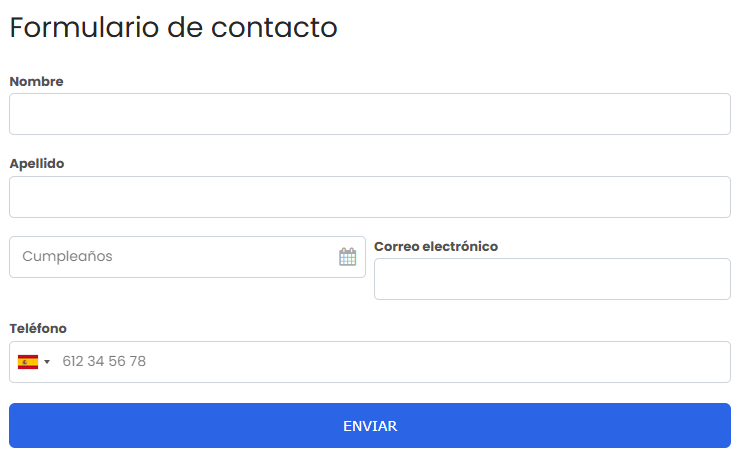
Pop-up: these are similar to forms, but are perfect for capturing leads at key moments, such as when leaving the website or scrolling.
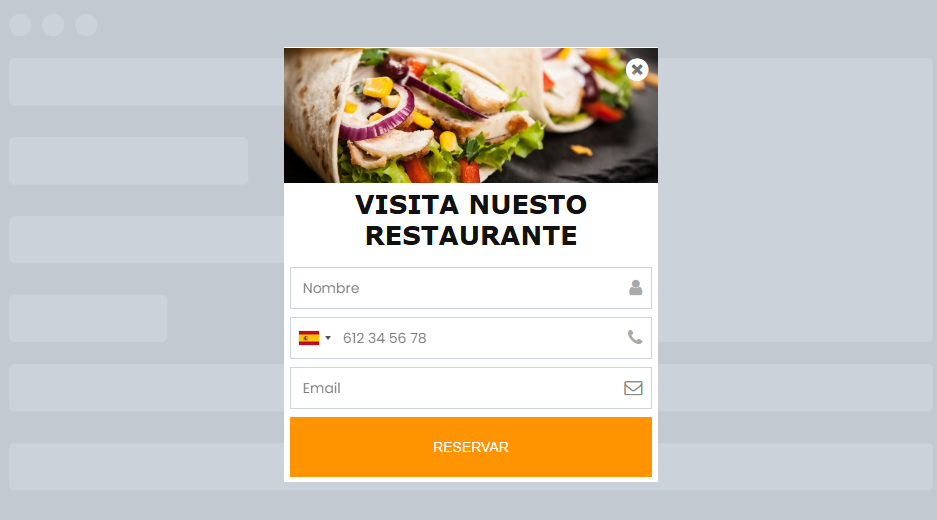
Landing pages: This is where AI comes into play. Clientify has its own artificial intelligence for you to design and customize your landing pages. This AI helps you to write texts, titles, images, etc.
You only need to give a short explanation of what you want to achieve and with a single click it generates everything for you so that this recruitment method is oriented to the objectives you have for your business.
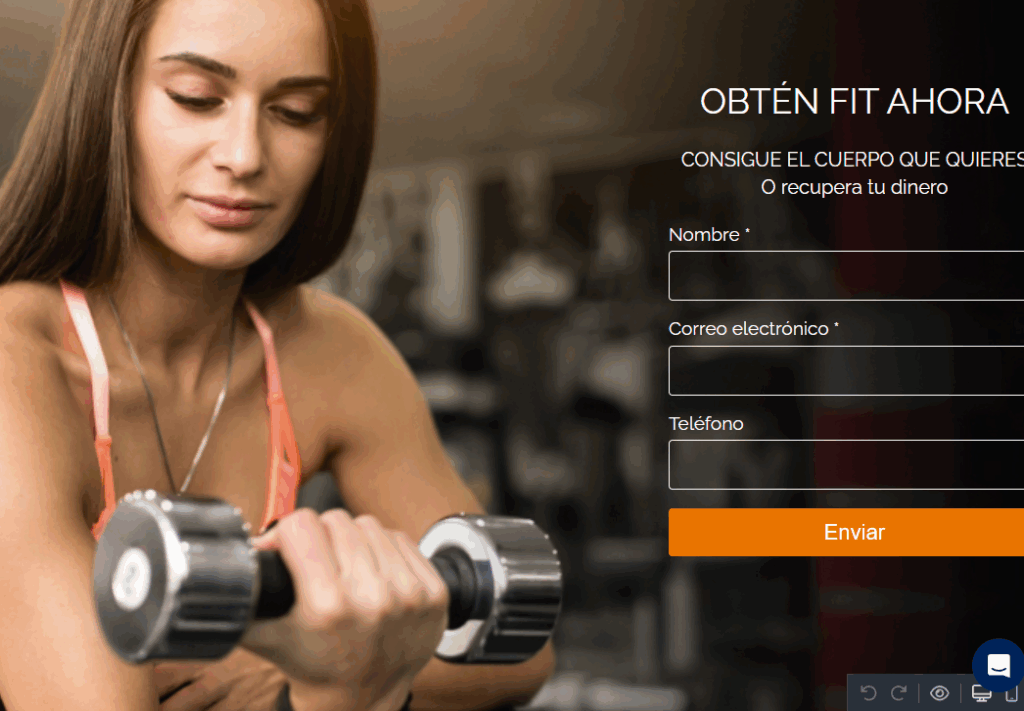
Chatbots with AI: Just like landings, this method of attraction is created with the help of Clientify’s AI. In this way, the chatbot will no longer look like a robot, butin addition to capturing the data you need, it will converse with the lead in a way that generates, from the beginning, a good customer service experience.
I leave you to watch our Webinar, where we explain step by step how to create a chatbot with AI.
Each lead that enters will be created as a new contact within the CRM and you will be able to define automatic tags that refer to their interests, to then segment your database and also to activate some specific automation.
This feature is ideal for identifying qualified leads from the first contact.
Examples of data collection by sector
Although the techniques are the same, the way they are applied varies greatly depending on the industry you are in. So here are some examples of how different industries can take advantage of our data collection capabilities:
Education and training:
Academies and universities can use enrollment forms or chatbots to answer frequently asked questions. All this information is automatically integrated into the CRM and allows students to be segmented by course, interest or stage of the educational process.
In addition, this information is key to perform an analysis of educational data and allow you to make more strategic decisions.
Industry and manufacturing:
In this sector, data collection is often more linked to technical forms or order records. With Clientify, they can create quote request forms and automate commercial follow-up.
E-commerce:
By having the possibility to connect your online store with Clientify, you don’t need to design another lead acquisition method as well; but you can create a chatbot with exclusive AI for support.
In addition, with all this information, you can trigger campaigns, via WhatsApp and email remarketing, recovery of abandoned carts or personalized recommendations based on the user’s behavior and previous purchases.
IT, telecommunications and software:
If you have this type of business, you already know that customer buying cycles are much longer. Create forms for interested parties to schedule their demo and perform a follow-up, manual and automated, depending on the interaction your user has.
Marketing agencies:
Use landing pages with forms per campaign or integrate chatbots with AI on your clients’ websites to capture leads in a non-intrusive way. Then show the different reports to your clients and see if the results obtained were what they expected.
Travel agencies:
Collect data such as number of travelers, destination, dates. All this information will be automatically saved through fields and tags in Clientify which will help you to personalize offers and follow-ups.
Health, beauty and wellness:
Use the forms to book appointments and send emails with post-treatment questions. All the information will be saved in the contact’s CRM file, allowing you to give them a personalized treatment to build their loyalty.
Professional services:
Accounting or legal firms can use contact or diagnostic forms to capture valuable data prior to a meeting. This not only centralizes information, but also automates communications and processes according to the type of client or service requested.
Importance of ethics in data collection
Collecting data is not just about throwing a form on the web and crossing your fingers. If you really want to get valuable information, then you need to implement this strategy with care, intention and long-term projection.
Here are three keys that can make a difference:
- Ask only what is necessary: You don’t need to ask for 20 fields. Ask just enough to advance your objective and without losing the user along the way.
- Use the data you got: Don’t box all this information. Start segmenting, create automatic flows; and take advantage of them to measure what works and what doesn’t.
- Always comply with the law: Always make sure to ask for explicit consent. Use double opt-in and privacy checkboxes, recaptcha and RGPD.
Also, keep in mind that according to the General Data Protection Regulation (GDPR), the user is not obliged to provide their personal data, unless it is strictly necessary to provide a service. That is why it is key that you explain why you are asking for them, how you are going to use them and what rights the person who provides them has.
Here you can consult a very clear guide on this subject: Is the user obliged to provide personal data?
Did you see? Data collection doesn’t have to be complicated.
Knowing your audience, personalizing campaigns and making better decisions is easy… if you use a platform like Clientify. Its features make collecting, automating and segmenting simple and don’t take up your time and energy.
My advice… take advantage of our 14-day free trial and start transforming your data into real results.

